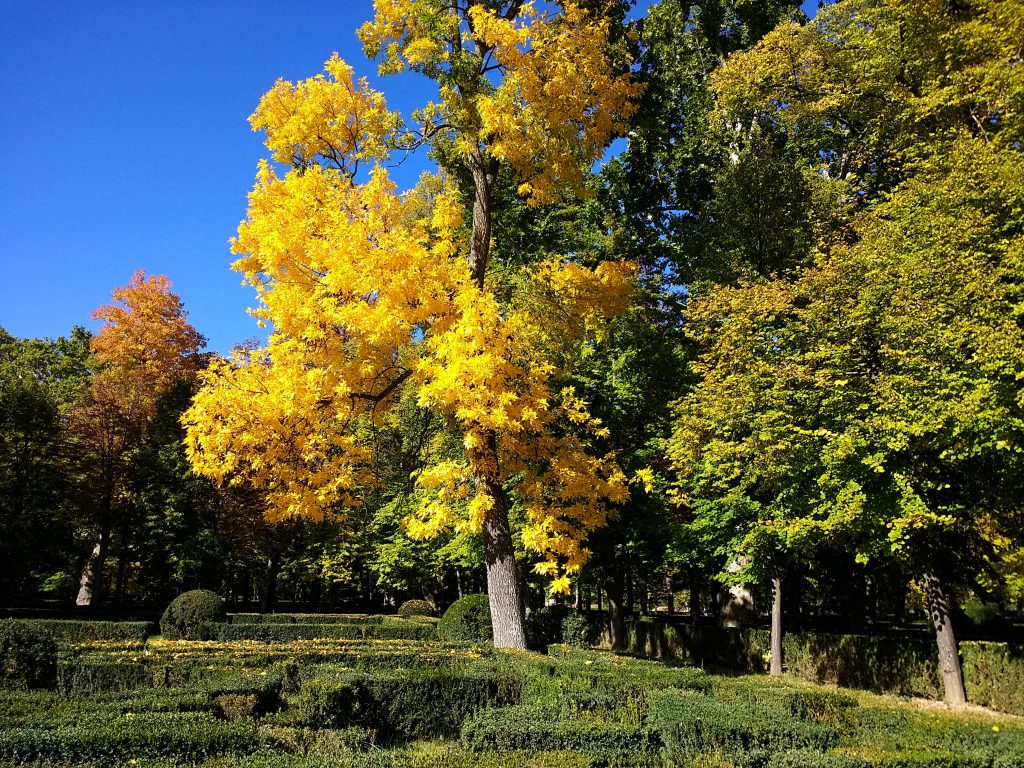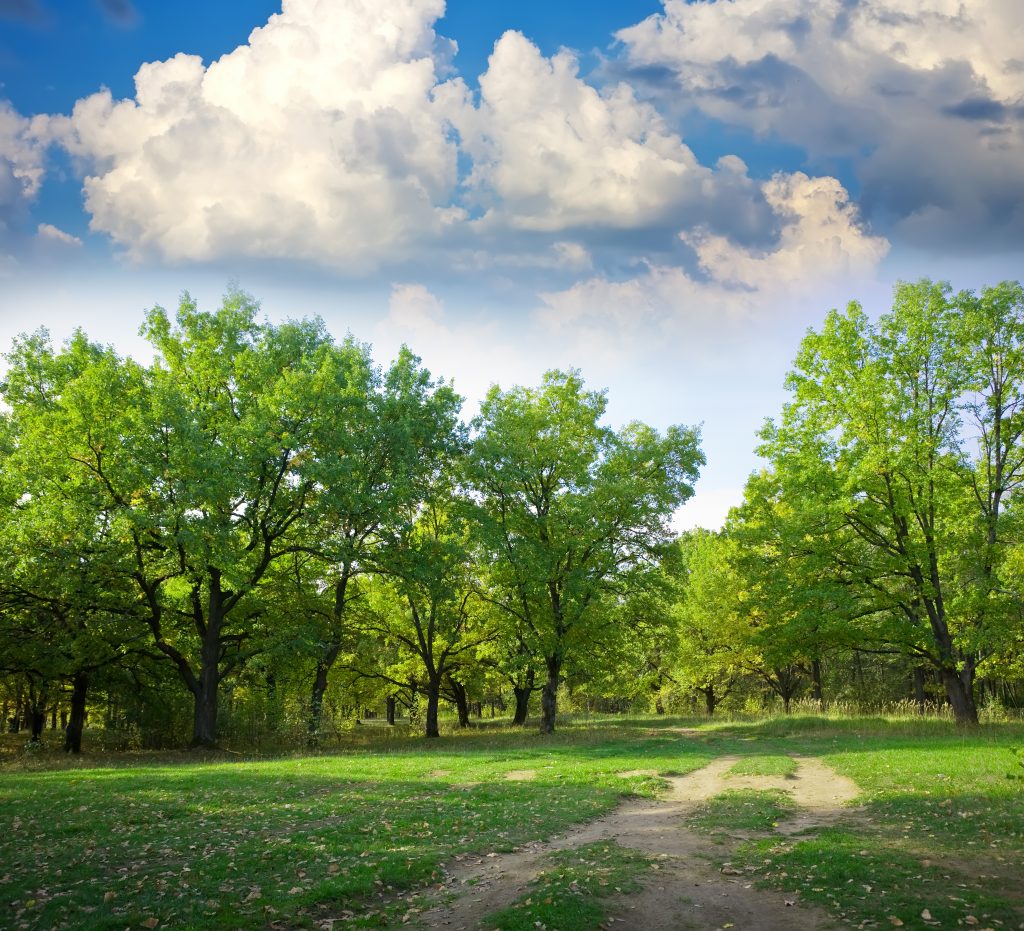The relationship between trees and crime rates is a multifaceted phenomenon that has gained attention from researchers, urban planners, and communities. While the exact mechanisms at play are complex and influenced by various factors, several theories and empirical studies suggest that the presence of trees and green spaces can have a positive impact on reducing crime rates, particularly property crimes. Here’s an explanation of the relationship:

- Broken Windows Theory: The “broken windows” theory posits that visible signs of disorder and neglect, such as broken windows or unkempt surroundings, can signal a lack of social control and lead to an increase in criminal activity. Trees and well-maintained green spaces counteract this by creating an environment that communicates care and attention to detail, discouraging criminal behavior.
- Improved Social Cohesion: Green spaces, including tree-lined streets and parks, encourage social interactions and a sense of community ownership. Residents who regularly use and maintain these spaces tend to establish stronger social bonds and are more likely to watch over their neighborhoods. This increased social cohesion can deter potential criminals, as the risk of being caught is higher in close-knit communities.
- Reduced Stress and Aggression: Natural environments, such as those with abundant trees, have been shown to reduce stress and promote relaxation. People living in areas with green spaces are less likely to experience chronic stress, which is linked to aggressive behavior and potentially criminal activities. A more relaxed and harmonious atmosphere created by trees can lead to fewer confrontations and less crime.
- Increased Surveillance: Trees and green spaces provide natural surveillance opportunities for residents. Well-maintained areas are more likely to attract law-abiding citizens who can act as informal “eyes on the street.” Criminals may feel deterred when they perceive a higher likelihood of being observed or reported.
- Environmental Design and Natural Guardianship: Closely related to natural surveillance, the concept of “natural guardianship” refers to the presence of individuals who, simply by being present, discourage criminal activity. Trees attract people to public spaces, increasing the chances of such guardianship and reducing the opportunity for crime.
- Cognitive Restoration: Access to nature, including trees, has been linked to cognitive restoration, improved attention, and reduced mental fatigue. When people experience cognitive restoration, they are less likely to engage in impulsive or aggressive behavior, which can contribute to lower crime rates.
- Enhanced Community Perception: The presence of trees and green spaces can positively influence how people perceive their neighborhoods. A well-maintained environment can signal that the community cares about its surroundings, fostering a sense of pride and ownership. This perception alone can discourage criminal activity.
While these theories provide valuable insights into the relationship between trees and crime rates, it’s important to note that the impact of trees on crime rates may vary based on factors such as local culture, socioeconomic conditions, and the specific design of green spaces. Additionally, the relationship between trees and crime rates may not be direct and causal but rather influenced by a combination of factors.
Nevertheless, the growing body of research suggests that investing in green infrastructure, such as tree planting and park development, can contribute to safer and more harmonious communities by promoting social cohesion, enhancing neighborhood aesthetics, and reducing stressors that might contribute to criminal behavior.
Significance of Property Crime Rates in Communities
Property crime rates hold significant implications for communities, affecting both the well-being of residents and the overall social and economic dynamics. Understanding the significance of property crime rates helps shed light on the broader impact they have on communities and individuals. Here’s an explanation of the importance of property crime rates in communities:

- Impact on Safety and Security: Property crime rates directly influence the sense of safety and security within a community. High rates of property crime can create an atmosphere of fear and vulnerability among residents, limiting their freedom to move and engage in activities outside their homes.
- Quality of Life: Communities with lower property crime rates generally offer a higher quality of life. Residents are more likely to feel at ease, enjoy their surroundings, and engage in outdoor activities without constant worry about theft or vandalism.
- Economic Consequences: Property crimes can lead to financial losses for individuals and businesses. Stolen property, damaged assets, and the costs associated with repairing or replacing them can strain personal finances and local economies.
- Community Cohesion: High property crime rates can erode community cohesion. Residents may become distrustful of one another, creating social divisions and isolating neighborhoods. A lack of cohesion hampers collective efforts to address common issues.
- Perceptions of Neighborhood: Property crime rates influence how neighborhoods are perceived by outsiders and potential residents. High crime rates can stigmatize an area and dissuade people from moving in, leading to depopulation and economic decline.
- Impact on Local Businesses: Areas with high property crime rates can discourage local businesses from thriving. Business owners may face increased costs for security measures, insurance premiums, and replacing stolen or damaged goods.
- Educational Attainment: High crime rates can affect educational outcomes. Children living in areas with significant property crime may experience stress and instability, which can impact their academic performance and future prospects.
- Emotional and Psychological Impact: Victims of property crime may experience emotional distress, trauma, and a sense of violation. This can lead to long-lasting psychological effects that impact their overall well-being.
- Police and Community Relations: High property crime rates can strain relations between law enforcement and the community. Residents may feel frustrated by the perceived lack of effective responses to crime, leading to diminished trust in law enforcement agencies.
- Community Investment: Property crime rates can deter individuals and organizations from investing in community improvement projects. Reduced investment can hinder the development of infrastructure, services, and recreational spaces.
- Tourism and Local Economy: High property crime rates can discourage tourism and visitor spending. Tourists may choose to avoid areas with reputations for crime, impacting the revenue generated by local businesses.
- Long-Term Development: Sustainable community development requires a safe environment that fosters growth and opportunity. High property crime rates can hinder progress and hamper efforts to attract investments and resources for development projects.
In conclusion, property crime rates are not just numbers; they reflect the well-being, safety, and vitality of communities. Addressing and reducing property crime rates is essential for fostering thriving neighborhoods, economic growth, social cohesion, and an enhanced quality of life for all residents.
Understanding Utah’s Property Crime Landscape
Understanding Utah’s property crime landscape involves delving into the specific context, trends, and patterns of property-related offenses within the state. This understanding is a crucial backdrop for investigating the potential influence of trees on property crime rates. Here’s an explanation of what it entails:

Property Crime Overview: Property crimes encompass a range of offenses that involve the theft, damage, or destruction of someone else’s property. This category includes burglaries, thefts, vehicle thefts, vandalism, and arson. By analyzing property crime data, researchers and law enforcement agencies can gain insights into the prevalence and nature of these offenses in Utah.
Statistical Data: Understanding Utah’s property crime landscape involves collecting and analyzing statistical data. This data provides information on the number of reported property crimes, the types of property crimes, and their distribution across different regions and neighborhoods within the state.
Trends and Patterns: Analyzing property crime data over time helps identify trends and patterns. For instance, researchers might observe whether property crime rates are increasing, decreasing, or remaining stable. They might also investigate whether certain areas experience higher rates of specific property crimes.
Crime Hotspots: Identifying crime hotspots is a significant aspect of understanding the property crime landscape. Hotspots are areas where property crimes are more concentrated. These hotspots can provide valuable insights into the factors contributing to higher crime rates, such as socioeconomic conditions, demographics, and environmental factors.
Comparative Analysis: Understanding Utah’s property crime landscape might involve comparing crime rates between different regions, cities, or neighborhoods within the state. This comparison can reveal disparities and highlight areas of concern that may require targeted interventions.
Contributing Factors: To fully understand the property crime landscape, researchers consider various contributing factors. These could include economic conditions, unemployment rates, population density, law enforcement strategies, and community engagement efforts. Each of these factors can influence the prevalence of property crimes.
Data Sources and Reporting: Researchers rely on accurate and comprehensive data sources to understand the property crime landscape. Law enforcement agencies compile and report crime data, which is then analyzed to identify patterns and trends. Understanding the accuracy and reliability of these data sources is essential for drawing meaningful conclusions.
Impact on Communities: Understanding Utah’s property crime landscape goes beyond numbers and statistics. It involves recognizing the impact of property crimes on communities and individuals. High property crime rates can affect community well-being, trust, and the quality of life for residents. It can also impact businesses, tourism, and economic development.
Policy and Prevention: A comprehensive understanding of the property crime landscape informs policy decisions and crime prevention strategies. Policymakers can use this information to allocate resources effectively, develop targeted interventions, and engage in community-based initiatives to reduce property crime rates.
In the context of investigating the potential influence of trees on property crime rates, understanding Utah’s property crime landscape provides a foundation for assessing how green spaces, such as trees, might interact with crime dynamics. It allows researchers to identify areas with high crime rates, analyze correlations, and explore potential mechanisms through which trees could impact crime prevention efforts.
If you need a tree service in Utah, you can call:
Truco Services, Inc.
4640 Commerce Drive
Murray, Utah 84107
(801) 466–8044
https://truetreeservices.com/


Comments are closed.